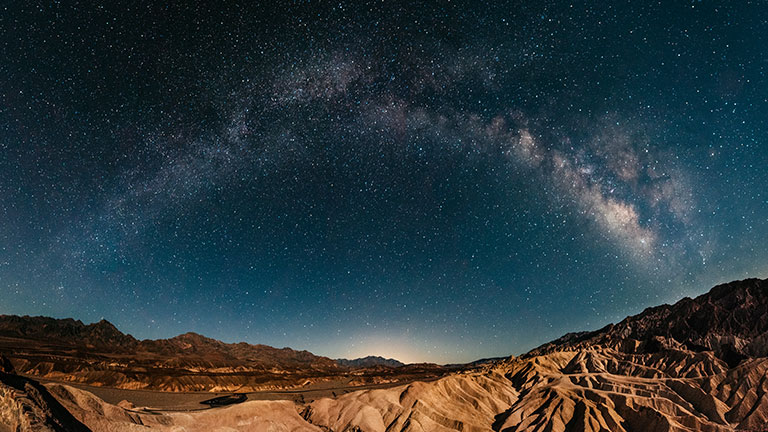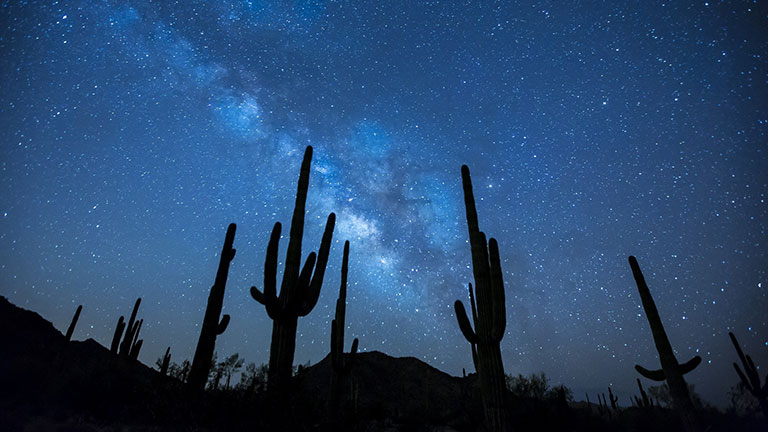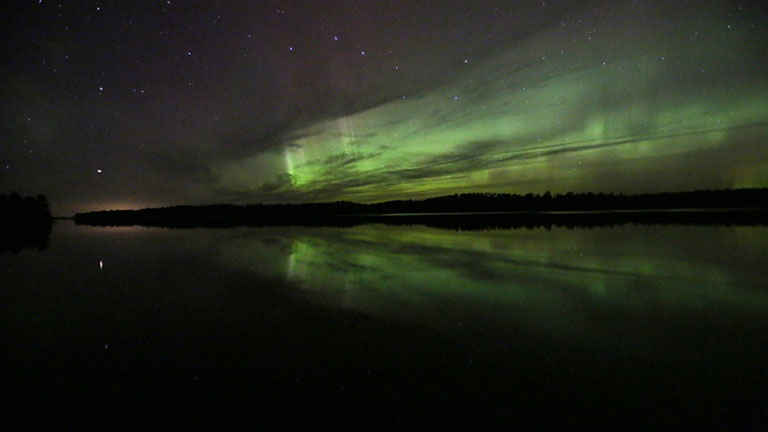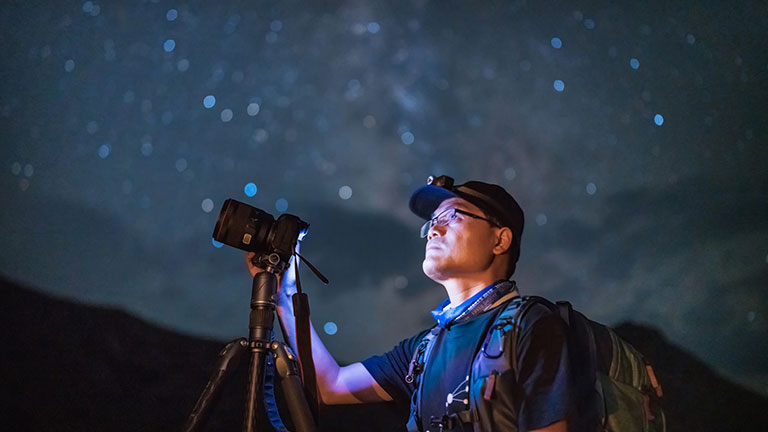Top Spots for Stargazing in US National Parks
From certified dark sky parks to naturally dark wilderness areas, these destinations offer stellar night sky views

Whether you're hoping to catch the Perseids meteor shower or simply want a clear view of the Milky Way, national parks are some of the best places to stargaze. The key is to find a spot with minimal light pollution, and many of the national parks—a handful of which are designated International Dark Sky Parks—offer ideal conditions for viewing the night sky thanks to their remote locations. Time your visit right, and you might even catch a ranger-led program to help you identify constellations and other celestial sights. Here are some of the top national parks across the US for stargazing.

Death Valley National Park, California
If you've visited this national park on the California-Nevada border at night, you understand why it earned the highest Gold Tier designation from DarkSky International—a recognition given to places with exceptionally low light pollution and outstanding star visibility. With Las Vegas far enough away to minimize interference, the park boasts some of the darkest skies in the country, making it ideal for stargazing.
Every February, stargazers gather for the park’s Dark Sky Festival, where scientists, families, astronomy enthusiasts take part in discussions, night sky tours, and guided field trips. Astrophotography sessions are also offered, along with opportunities to observe stars, planets, and distant galaxies through high-powered telescopes.

Utah's ‘Mighty Five’ National Parks
Utah holds the top spot for the most DarkSky-certified locations in the country—and that includes all five of its stunning national parks.
Arches, Bryce Canyon, Canyonlands, Capitol Reef, and Zion have each earned the prestigious designation as dark sky parks by DarkSky International.
Here are a few highlights of each:
- Bryce Canyon National Park – Visit during the annual Astronomy Festival in June to enjoy daytime solar telescope viewings, astrophotography programs, and plenty of opportunities to stargaze through high-powered telescopes in the evenings.
- Capitol Reef National Park – In addition to guided full moon walks, the park hosts its annual Heritage StarFest in September, bringing together astronomy fans and scientists for talks, demonstrations, and stargazing sessions.
- Arches and Canyonlands National Parks – These parks co-host the annual Southeast Utah AstroFest in June, featuring evening astronomy programs, telescope viewing, and a variety of family-friendly activities.
- Zion National Park – August and September are the best months to view the Milky Way from this park, thanks to clear skies, warmer nighttime temperatures, and the seasonal peak visibility of the galactic core. Check out stargazing tips for Zion—including top viewing locations within the park—or book a tour with Stargazing Zion for an elevated experience with professional astronomers, telescope access, and even hot cocoa to keep you warm.

Saguaro National Park, Arizona
Saguaro National Park was designated an Urban Night Sky Place in 2023—a milestone that recognizes the park's ongoing partnership with the neighboring city of Tucson to reduce light pollution. These efforts not only protect the view of the night sky for visitors but also benefit many Sonoran Desert species that rely on natural darkness, moonlight, and starlight for survival—such as bats, owls, and nocturnal pollinators like moths. This region of Arizona is also known for its strong astronomical research community, including serving as home to the headquarters of DarkSky International.

Grand Canyon National Park, Arizona
On clear nights at the South Rim of Grand Canyon National Park, the sky becomes as breathtaking as the canyon itself. You might come across a free ranger-led, laser-guided astronomy program, where constellations, planets, and deep-sky objects are pointed out with precision and storytelling. On some nights, local astronomers set up high-powered telescopes for public viewing, offering a rare chance to see celestial wonders up close. If you prefer a quieter, DIY experience, bring a blanket and head to one of the park’s top stargazing spots: Mather Point, Moran Point, Lipan Point, or Yavapai Point. These locations offer wide, dark horizons and sweeping canyon views.

Voyageurs National Park, Minnesota
For the best stargazing experience, an unobstructed view of the horizon is key—and Voyageurs National Park delivers. Located in the Northwoods region of northern Minnesota, along the Canadian border, the designated International Dark Sky Park offers expansive skies, minimal light pollution, and a remote landscape dotted with islands, boreal forest, and rocky shorelines, creating ideal conditions for stargazing. Great spots include the upper parking lot at the Rainy Lake Visitor Center and the Meadowood Road Day Use Area, where wide-open views and dark skies reveal constellations, planets, and, in the right season, even the northern lights.

Acadia National Park, Maine
Famous for being the first place in the US to see the sunrise for much of the year, Cadillac Mountain in Acadia National Park also offers an excellent stargazing spot thanks to its high elevation and unobstructed views. However, nighttime access to Cadillac Mountain is limited, typically available only during a few weeks in the fall and spring outside of the summer vehicle reservation system. For more consistent stargazing options, consider the Seawall Picnic Area on the park’s quieter western side or Jordan Pond area, where reflective water and forest silhouettes make for a memorable night sky experience.

Tips for Stargazing
To optimize your experience, keep the following in mind:
- Use red light instead of white.
Bright white lights and phone screens can ruin your night vision. Switch to a red-light flashlight or apply red film over a regular flashlight to help your eyes adjust and stay adapted to the dark.
- Time your visit around a new moon.
The new moon phase (when the moon is not visible) offers the best viewing conditions.
- Check the weather.
Make sure there won't be any cloud cover.
- Pick up a star chart.
Also known as a planisphere, this serves as a helpful reference guide.
- Download stargazing apps.
Apps such as SkyView or Night Sky provide a virtual representation of the night sky to help you identify stars, planets, constellations, and more.
- Give your eyes time to adjust.
It can take 20 to 30 minutes for your eyes to fully adapt to the dark.
- Dress appropriately, and bring supplies.
Nighttime temperatures can drop, so bring layers, a blanket or chair, and possibly insect repellent. A warm drink is a nice bonus.
Check out the DarkSky International website for a full list of designated Dark Sky Parks and Places around the world.
